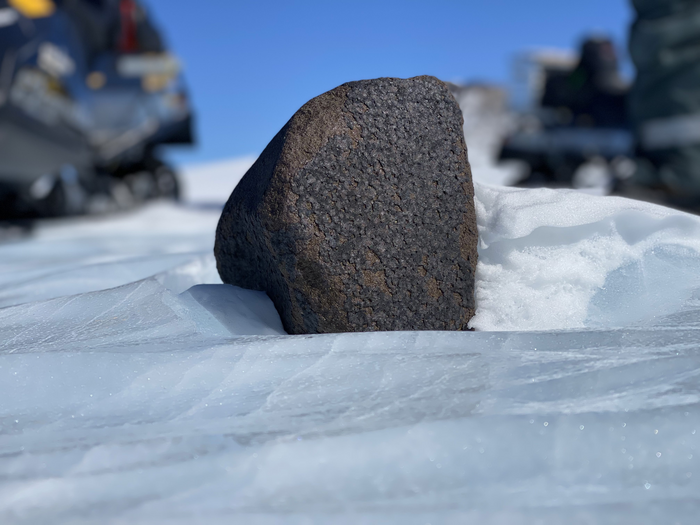An international team of researchers have discovered five new meteorites in Antarctica, including one that is among the largest ever found on the icy continent.

The unassuming black rock is about the size of a cantaloupe but weighs a whopping 8 kilograms (around 17 pounds), owing to its high mineral density. Though the size of a meteorite doesn’t necessarily determine its scientific value, University of Chicago research scientist Maria Valdes said the discovery is “rare, and really exciting.”
Antarctica is a veritable gold mine for meteorites — approximately 45,000 space rocks have been found on the continent’s icy surface in the past century. The 8 kg meteorite is one of around 100 that size or larger found in Antarctica, according to Valdes, who helped lead the expedition alongside scientists from Belgium and Switzerland.
In an interview with NPR, Valdes revealed that the massive meteorite almost escaped detection.
“We had found four meteorites, about 150 grams or less up until that point. And we were about to go home, pack up our tents and drive the snowmobiles back to base,” she said. “It was literally the last hour of the last day. And we stumbled upon this huge meteorite just sitting by itself in the middle of a blue ice field.”
“We got so excited. And we were like, what amazing luck,” Valdes added.
All five meteorites retrieved by the team are being analyzed at the Royal Belgian Institute of Natural Sciences, but sediment that may contain tiny micrometeorites has been divided among the four researchers for their own study.
Valdes told CNN that her focus is cosmochemistry, and she plans on using strong acids to dissolve her specimens to isolate various elements.

Get daily National news
“Then I can start to think about the origin of this rock, how it evolved over time, what kind of parent body it came from, and where in the solar system that parent body formed,” Valdes said. “Those are the big questions that we try to address.”
A press release from the Field Museum regarding the find says that Antarctica is “one of the best places in the world to hunt for meteorites” because of its ideal landscape. The “black space rocks stand out clearly against snowy fields,” and Antarctica’s dry climate limits any weathering the meteorites experience.

Spotting meteorites is a surprisingly low-tech endeavour. Though the researchers were led to specific sites using state-of-the-art satellite imagery, Valdes told NPR that the researchers would simply drive slowly across the ice fields on snowmobiles, searching for black rocks against the white expanse.
The Field Museum press release notes that “even when meteorites sink into the ice, the glaciers’ churning motion against the rock below helps re-expose the meteorites near the surface.”
Once the researchers find a rock that looks like a meteorite, they look for a few signs to see if it’s the real deal.
“There are a lot of terrestrial rocks that do look like meteorites. We call these meteor wrongs,” Valdes told NPR.
“But what we’re looking for is a telltale fusion crust in the first place. This is a glassy crust that develops all over the meteorite as it enters our atmosphere at high speeds and melts slightly. And then secondarily, we can also see if it’s very heavy for its size,” she said.
Valdes says she’s eager to learn what the meteorites can reveal about their origin, and ultimately our own.
“Studying meteorites helps us better understand our place in the universe. The bigger a sample size we have of meteorites, the better we can understand our Solar System, and the better we can understand ourselves.”











Comments